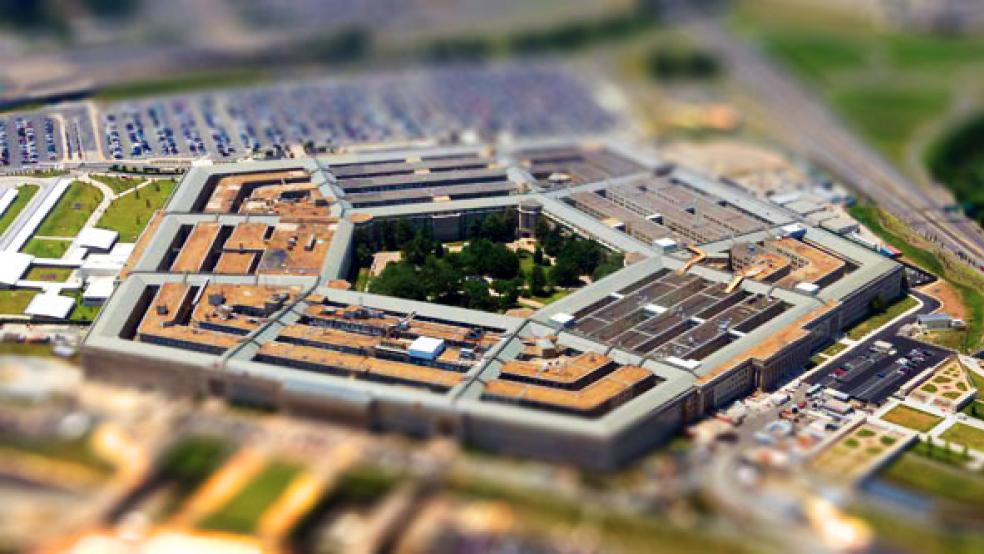Republican leaders are in a mad scramble to shower tens of billions of dollars more on the Defense Department to persuade defense hawks to back the House and Senate budget blue prints next week and to signal their resolve to bolster the military in the war against ISIS terrorists.
They appeared to be making substantial headway on Thursday in lining up support for their ten-year balanced budget plans, despite warnings from some lawmakers defense experts that Congress is moving too swiftly before fully considering the implications of their defense policies.
Related: House and Senate Duke It Out over Defense Spending
“The process is broken,” Rep. Mick Mulvaney (R-S.C.), a fiscal conservative opposed to the defense spending political gamesmanship, told The Wall Street Journal.
On Thursday, the Republican controlled House and Senate Budget Committees rejiggered their budget blue prints to placate defense hawks. They did that by circumventing defense spending caps mandated by the 2011 Budget Control Act and substantially boosting overall Pentagon spending in the coming fiscal year well beyond President Obama’s already sizable request.

While both committees voted to technically observe the mandated $523 billion cap on basic military operations, personnel and contracts for the fiscal year that begins next Oct. 1, they nearly doubled the size of the emergency Overseas Contingency Operations to $96 billion for the coming year.
That fund is largely dedicated to financing U.S. military efforts in Afghanistan and Iraq and is not governed by the cap. By showering it with tens of billions of dollars more, critics say the Republicans are converting it to a “slush fund” for general use by the Pentagon.
Related: House GOP’s Creative Accounting Lifts Defense Budget
Earlier this year, President Obama submitted a defense budget request totaling $585 billion for general operations and contracts and U.S. warfare in the Middle East. House and Senate GOP budget leaders now appear on course to approve a total of $619 billion for the coming fiscal year, by using this back door spending approach.
While congressional defense hawks including Senate Armed Services Committee Chair John McCain (R-AZ), Sen. Lindsey Graham (R-SC) and House Armed Services Committee Chair Mac Thornberry (R-TX) applauded the president’s call to breach the spending caps in the coming year, they complained that the administration fiscal 2016 request was still woefully inadequate and pressed for tens of billions more in spending next year.
The turning point came yesterday afternoon when the Senate Budget Committee approved an amendment by Graham boosting overall defense funding next year by $38 billion, which put the Senate plan generally in line with the budget approved earlier in the day by the House Budget Committee. Graham had warned that without the extra funding for the OCO account, there was no way the budget could pass the full Senate next week.
Related: Why Spend More on Defense When They Waste So Much?
Graham said of the added spending, "It's not my goal to increase spending, it's my goal to increase the ability to defend America overall." Sen. Kelly Ayotte (R-NH), a co-sponsor of the amendment, said, “American troops are deployed overseas in Afghanistan and combatting the threat we face from ISIS and other terrorist groups, and we have a responsibility to provide them with the very best training and equipment available.”
However, Sen. Bernie Sanders (I-VT), the ranking member of the committee, derided Graham’s plan as a “total budget gimmick” that will directly add to the budget deficit. “You want to debate defense spending?” Sanders said to the committee Republicans. “Let’s debate it.”
Both the Senate and House committees approved their balanced budget blue prints along strict party lines, and prepared to send them to the House and Senate floors for debate and votes next week. The proposals are designed to wipe out the deficit in ten years without raising taxes but by cutting as much as $5.5 trillion from mandatory and discretionary programs. While the two committees use different strategies for raising overall defense spending above the caps, the end result will be the same.
In drafting their budgets, Senate and House GOP leaders appear confident that they have simultaneously met the concerns of defense hawks and fiscal conservatives by boosting overall spending while preserving the appearance of observing the caps.
Related: GOP Balanced Budget Moves Forward as Rifts Remain
Yet the two budget plans are certain to prompt intense debate on the House and Senate floors next week, and GOP leaders will have to fight to hold their party together. With Democrats vowing to oppose the budgets, House Speaker John Boehner (R-OH) and Senate Majority Leader Mitch McConnell (R-KY) can only afford to lose only a handful of their members and still pass the budgets.
Meanwhile, two prominent defense experts critical of the GOP drive to bolster the defense budget have written in Defense One that there are plenty of ways the Pentagon could spend its money more efficiently. “Nobody has said why or how the currently prescribed funding levels are inadequate to deal with the threats facing the United States today and beyond,” wrote retired Lt. Gen Robert G. Gard Jr, chairman of the board of the Center for Arms Control and Non-Proliferation, and Angela Canterbury, the center’s executive director.

“As McCain well knows, one of the most serious financial problems facing the nation is how so many taxpayer dollars are wasted on military programs that aren’t needed and on abuses in Pentagon spending,” they wrote. “McCain has been a longtime critic of the infamous problems with the F-35 Joint Strike Fighter, the poster child of Pentagon’s wasteful excess.
Related: Obama Would Slash Overseas War Budget by 21 Percent
“The military has and will spend more on this aircraft than France and the United Kingdom together spend on defense in one year,” they added. “What’s more, the F-35 hasn’t come close to proving its value and isn’t necessary to meet today’s security challenges.”
Top Reads from The Fiscal Times:





